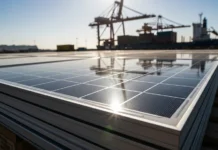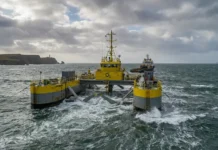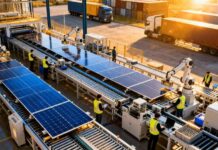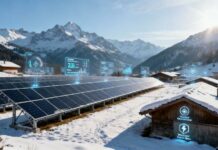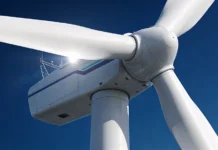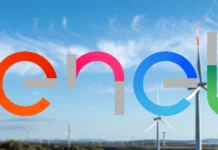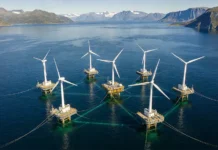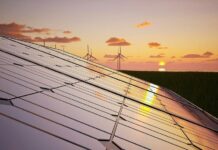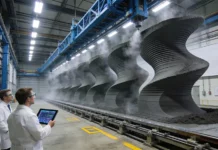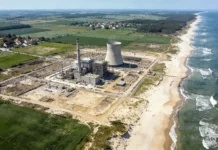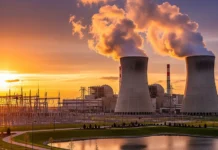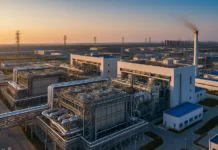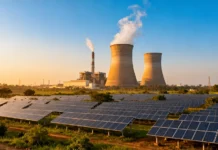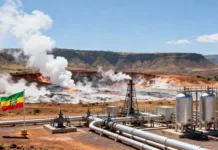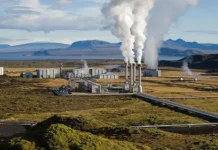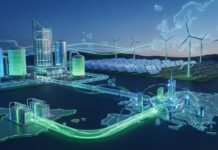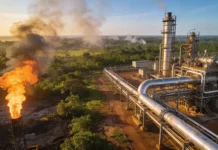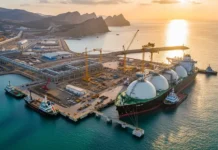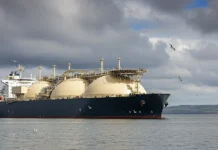According to a BNEF research published this week, over 40% of the world’s energy generating capacity now comes from zero-carbon sources. According to the analysis, solar and wind power accounted for an astounding 91% of all new power capacity installed in 2023, with fossil fuels accounting for only 6% of the total.
Data from over 140 markets is gathered by BNEF’s Power Transition Trends report, which tracks global energy trends. China’s rapid advancement in wind and solar technology over the last ten years indicates that it is far and away leading the world in the deployment of renewable energy. According to BNEF, the top five countries, which accounted for 60% of the world’s renewable generation last year, were the United States, Brazil, Canada, and India.
The United States can create even more clean energy despite difficulties thanks to green hydrogen.
According to BNEF, the United States came in second place behind China in terms of new investments in renewable energy during the first half of 2024. However, certain barriers still stand in the way of progress, such as a faction of legislators who seem committed to turning back the clock on sustainable energy.
Development of renewable energy is nevertheless hampered by gaps in the electrical transmission network and a bottleneck for grid connections, in addition to political politics and local opposition. The nascent green hydrogen sector provides a simultaneous remedy for both.
Green hydrogen is created from renewable resources as opposed to conventional hydrogen, which is derived from coal or natural gas. The majority of green hydrogen is produced by splitting water in electrolyzers, which separate water molecules into hydrogen and oxygen using an electrical current. In essence, green hydrogen production from wind or solar farm power produces a large-scale, long-duration energy storage platform.
Green hydrogen may be moved by truck, train, pipeline, or ship rather than using the current grid system to move green energy. Additionally, electrolysis systems may operate throughout the day when solar energy exceeds demand or at night when there is surplus wind power available.
Leveraging renewable energy to propel the U.S. hydrogen economy
Notwithstanding the challenges, President Joe Biden’s 2022 Inflation Reduction Act is deservedly recognized for having ignited a powerful new wave of investment in renewable energy. However, there are also noteworthy new laws that are promoting the renewable energy industry. Furthermore helpful is a significant section on hydrogen included in the 2021 Bipartisan Infrastructure Law.
The infrastructure law’s hydrogen component necessitates a protracted pre-implementation process that is still in progress, despite being enacted a year ahead of the Inflation Reduction Act. The clause sets aside $7 billion for a brand-new initiative to boost the hydrogen market in the United States. The concept, known as Regional Clean Hydrogen Hubs, aims to arrange the distinct energy resources, market prospects, and infrastructural advantages found in several U.S. areas.
While some financing is set aside to encourage the generation of hydrogen from natural gas with carbon capture, the majority of the effort is concentrated on nuclear energy and renewable energy sources.
Seven regional centers were chosen by the US Department of Energy last autumn for possible financing. Three of the centers moved on to the financing award stage after a negotiation phase.
One is the Pacific Northwest Hydrogen Association, which encompasses three states with relatively low population densities, plenty of open space, and an abundance of renewable energy resources, including offshore wind: Montana, Oregon, and Washington.
By assisting the industry that produces electrolyzers, the organization hopes to lower the cost of electrolysis systems. According to the organization, the widespread use of electrolyzers by the Pacific Northwest Hydrogen Hub will play a key role in driving down electrolyzer costs, making the technology more accessible to other producers, and reducing the cost of hydrogen production.
The ultimate objective is to provide green hydrogen to power the West Coast’s whole heavy-duty, low-emission freight network. The organization also lists the following other applications for hydrogen: seaports (cargo handling, drayage), industry (generators, peak power, data centers, refineries), and agriculture (fertilizer manufacturing).
In the meanwhile, the Alliance for Renewable Clean Hydrogen Energy Systems (ARCHES), a sister center in California, plans to use water electrolysis and biomass to make hydrogen. It intends to sell the extra hydrogen it generates to other markets and use it to decarbonize the state’s seaports.
There is support for natural gas, but diversity is essential.
The Appalachian Regional Clean Hydrogen Hub (ARCH2) is the third hydrogen hub to be awarded. This group covers western Pennsylvania, Ohio, and West Virginia and focuses only on natural gas with carbon capture. If the other new hubs live up to the promise of flooding the market with inexpensive green hydrogen, then that strategy may not be profitable in the long term. Furthermore, it is undoubtedly at odds with the urgent advice of politicians and climate experts, who emphasize the need for quick decarbonization. However, there is a natural gas carveout included in the Bipartisan Infrastructure Law.
The other six hubs show how various renewable resources might be used to sustain a strong, diverse domestic hydrogen sector, in stark contrast to ARCH2. None of the four hubs that are currently in the process of negotiating their final allocations are solely focused on natural gas.
To leverage nuclear and renewable energy for water electrolysis, Eastern Pennsylvania, Delaware, and New Jersey formed the Mid-Atlantic Clean Hydrogen Hub partnership. To support the endeavor, the U.S. Department of the Interior has leased offshore wind sites to New Jersey and Delaware.
The Gulf Coast Hydrogen Hub in Texas intends to concentrate on natural gas with carbon capture as well as water electrolysis from the area’s thriving wind and solar businesses. The partnership, led by the company HyVelocity, is working to lower the price of hydrogen by using natural salt caverns that are inexpensive to build and pipeline infrastructure that can be used for distribution and storage.
Similarly, in order to boost the regional hydrogen market, the Heartland Hub consisting of Minnesota, North Dakota, and South Dakota will make use of various renewable and non-renewable energy sources, with an emphasis on decarbonizing the production of fertilizer.
The Illinois-Indiana-Michigan Midwest Hydrogen Hub is the fourth diverse hub that is now up for negotiation. This center, which operates under the auspices of the Midwest Alliance for Clean Hydrogen, seeks to decarbonize power generation, heavy-duty transportation, steel and glass manufacturing, and aviation fuel.
The introduction of new financial options to assist energy storage and renewable energy projects is being driven by the Inflation Reduction Act, even as the full impact of the Regional Clean Hydrogen Hubs initiative starts to show over the next several years. But we shouldn’t take these significant new policies for granted. The next president, Congress, state legislators, and the American people will all need to consistently and firmly support them if they are to have the greatest possible influence on quick decarbonization.



